- 5 Live Project
- Self-Paced/ Classroom
- Certification Pass Guaranteed
- The SAS certification training course in Gurgaon has been designed to provide you all the necessary skills that are considered vital to become a SAS programmer. You will learn about SAS basics, statistical techniques, and advanced programming concepts in SAS.
- The course gives a series of interactive assignments that will make your learning even more effective than usual. The SAS training course will help you to prepare for certifications as well that include SAS BASE certified professional, SAS Advanced Programmer, and SAS administrator.
- The SAS training course will also help to gain skills in business intelligence domain and business analytics space. Once you complete the SAS certification Training course with us, you will gain enough proficiency in managing spreadsheets, databases, SAS functions, and more.
- With the top SAS training in Gurgaon, you will also gain hands-on expertise in data mining, data analytics, data modelling techniques, predictive analysis, and how to gain meaningful insights with real-world projects. At the basic level, you will learn about SAS Macros, SQL procedures, Statistical techniques, and decision trees.
- The core objective of SAS training course in Gurgaon is to help you learn SAS basics programming and SAS advance programming concepts.
- With the most prominent SAS training institute in Gurgaon, you not only acquire the essential SAS skills but make yourself eligible for leading industries as well.
Learn predictive analytics in SAS, Learn SAS GUI, datasets, data manipulation techniques, and import/export keywords in SAS.
You will also get an idea of iterative looping and conditional looping in SAS.
You will learn how to solve complex SAS problem using SAS.
You would know how to manage SAS programming using arrays.
Perform basic and advanced analytics using statistical techniques in SAS.
Know about automation or complex tasks that can be automated with the help of MACROs.
You would learn about invoking SQL queries using SAS.
The SAS placement course will help you to prepare for the certification and start applying for jobs in leading industries.
- Most of the Companies believe that SAS is a suitable platform for data analytics and helps to make quick decisions too. For almost all industries, only 12 percent of total data is analyzed thoroughly and rest is wasted. For a professional SAS programmer especially on the completion of SAS training in Gurgaon, the average salary ranges between $70K to $102K even at the beginner level. It may vary as you grow in your experience.
- SAS is one of the most sought-after technology these days and most common profiles associated with SAS include SAS data scientists, business analysts, etc. With an amazing growth witnessed by the platform, it is the most potent time to get into the SAS training course with the leading SAS training institute in Gurgaon and start a never-ending career ahead!
- SAS delivers an unexpected career growth on the completion of SAS training in Gurgaon and it has been the market leader too for many years to come. There are more than 1.5 lacs jobs active currently in the SAS domain and the count is certainly going to rise in the near future too. So, you can imagine itself the career growth and future scope in SAS. Also, if you complete one certification exam too alongside then it is easy to ask for 30 percent hike or even more.
- So, it is clear that SAS certification course makes you a specialist in SAS technology and makes you a quick decision-maker too. Also, SAS online training will help you to meet your career goals too.
- SAS is a powerful business analytics platform and helps enterprises to improve their business performance to the superior level. The SAS training in Gurgaon helps you to get the right skills to manage spreadsheet and databases. The course makes you eligible to apply for leading industries and makes you a good decision-maker too. If you know SQL fundamentals in-depth then it could be an added benefit for you.
- SAS means STATISTICAL ANALYSIS SYSTEM that offers detailed analytics including BI, predictive analytics, data management, multivariate analysis, and more. SAS is the number one technology in business analytics and helps industries to manage their daily work effectively. The main objective of SAS platform is to convert collected data into meaningful insights that may give a completely new direction to businesses.
- SAS has a friendly GUI and it can be used by anyone either he is a technical or non-IT person. To use this software, data must be in excel or SAS format only. With SAS certification course, you will get all the required skills and learn to manage spreadsheets and databases like a pro. Get trained by the most potent SAS training institute in Gurgaon and make yourself eligible to apply for industry giants today.
- There are multiple job roles and responsibilities in SAS that you would know with the SAS training in Gurgaon. For your reference, we are giving basic idea what is common to all job profiles.
- With the eminent SAS training in Gurgaon, you would become capable to manage all these job roles and responsibilities with utmost grace.
You must have a sound idea of SAS basics programming and SAS advance programming concepts.
You must know about the predictive analytics in SAS, SAS GUI, datasets, data manipulation techniques, and import/export keywords in SAS.
You must have an idea of iterative looping and conditional looping in SAS.
You should know how to solve complex SAS problem using SAS.
You must know how to manage SAS programming using arrays.
You should know about basic and advanced analytics using statistical techniques in SAS.
You must know about automation or complex tasks that can be automated with the help of MACROs.
You will also learn about invoking SQL queries using SAS.
- Microsoft, Walmart, IBM, Facebook, Oracle, and more. These are a few top hiring industries in SAS that are actively recruiting SAS professionals worldwide. With the SAS certification course in Gurgaon, you become capable enough to apply for leading industries and clear their interviews in the first attempt mostly. Also, gain expertise in using SAS basic programming techniques and learn about advanced concepts at the later stage.
- In this way, SAS placement course in Gurgaon will help you to become an in-demand SAS professional and earn credentials that are valid worldwide. SAS is an amazing analytics tool that is used by largest industries these days and ensures effective results too.
- The SAS Training in Gurgaon is suitable for anyone who want to learn about SAS basic and advanced skills. It is also good for learners who want to gain hands-on expertise in passing certification exam.
- The best part is that you will be awarded with a course completion certificate in the end. This certificate is a valid proof of your skills and helps you to gain preference among the crowd as a skilled SAS professional. We wish you all the very best for a brighter career ahead!
Why should you learn SAS?
By registering here, I agree to Croma Campus Terms & Conditions and Privacy Policy
 Course Duration
Course Duration
32 Hrs.Flexible Batches For You
19-Apr-2025*
- Weekend
- SAT - SUN
- Mor | Aft | Eve - Slot
21-Apr-2025*
- Weekday
- MON - FRI
- Mor | Aft | Eve - Slot
16-Apr-2025*
- Weekday
- MON - FRI
- Mor | Aft | Eve - Slot
19-Apr-2025*
- Weekend
- SAT - SUN
- Mor | Aft | Eve - Slot
21-Apr-2025*
- Weekday
- MON - FRI
- Mor | Aft | Eve - Slot
16-Apr-2025*
- Weekday
- MON - FRI
- Mor | Aft | Eve - Slot
Want To Know More About
This Course
Program fees are indicative only* Know more
Timings Doesn't Suit You ?
We can set up a batch at your convenient time.
Program Core Credentials
Trainer Profiles
Industry Experts
Trained Students
10000+
Success Ratio
100%
Corporate Training
For India & Abroad
Job Assistance
100%
BATCH TIMING
As per your requirementFOR QUERIES, FEEDBACK OR ASSISTANCE
Contact Croma Campus Learner Support
Best of support with us
SAS Certification Training Programs
SAS Certification TrainingPrograms
- Understanding Concepts of Excel
Creation of Excel Sheet Data
Range Name, Format Painter
Conditional Formatting, Wrap Text, Merge & Centre
Sort, Filter, Advance Filter
Different type of Chart Creations
Auditing, (Trace Precedents, Trace Dependents)Print Area
Data Validations, Consolidate, Subtotal
What if Analysis (Data Table, Goal Seek, Scenario)
Solver, Freeze Panes
Various Simple Functions in Excel(Sum, Average, Max, Min)
Real Life Assignment work
- Ms Excel Advance
- Lookup
- VLookup
- HLookup
- Column Wise
- Row Wise
- Auto Filter
- Advance Filter
- Goal Seek
- Scenario Manager
- Advance use of Data Tables in Excel
- Reporting and Information Representation
- Pivot Chat
- Slicer with Pivot Table & Chart
- Advance Functions of Excel
- Math & Trig Functions
Advance Data Sorting
Multi-level sorting
Restoring data to original order after performing sorting
Sort by icons
Sort by colours
Lookup Functions
Subtotal, Multi-Level Subtotal
Grouping Features
Consolidation With Several Worksheets
Filter
Printing of Raw & Column Heading on Each Page
Workbook Protection and Worksheet Protection
Specified Range Protection in Worksheet
Excel Data Analysis
Data Table
Pivot Table
Generating MIS Report In Excel
Text Functions
Lookup & Reference Function
Logical Functions & Date and Time Functions
Database Functions
Statistical Functions
Financial Functions
Functions for Calculation Depreciation
- SQL Server Fundamentals
SQL Server 2019 Installation
Service Accounts & Use, Authentication Modes & Usage, Instance Congurations
SQL Server Features & Purpose
Using Management Studio (SSMS)
Conguration Tools & SQLCMD
Conventions & Collation
- SQL Server 2019 Database Design
SQL Database Architecture
Database Creation using GUI
Database Creation using T-SQL scripts
DB Design using Files and File Groups
File locations and Size parameters
Database Structure modications
- SQL Tables in MS SQL Server
SQL Server Database Tables
Table creation using T-SQL Scripts
Naming Conventions for Columns
Single Row and Multi-Row Inserts
Table Aliases
Column Aliases & Usage
Table creation using Schemas
Basic INSERT
UPDATE
DELETE
SELECT queries and Schemas
Use of WHERE, IN and BETWEEN
Variants of SELECT statement
ORDER BY
GROUPING
HAVING
ROWCOUNT and CUBE Functions
- Data Validation and Constraints
Table creation using Constraints
NULL and IDENTITY properties
UNIQUE KEY Constraint and NOT NULL
PRIMARY KEY Constraint & Usage
CHECK and DEFAULT Constraints
Naming Composite Primary Keys
Disabling Constraints & Other Options
- Views and Row Data Security
Benets of Views in SQL Database
Views on Tables and Views
SCHEMA BINDING and ENCRYPTION
Issues with Views and ALTER TABLE
Common System Views and Metadata
Common Dynamic Management views
Working with JOINS inside views
- Indexes and Query tuning
Need for Indexes & Usage
Indexing Table & View Columns
Index SCAN and SEEK
INCLUDED Indexes & Usage
Materializing Views (storage level)
Composite Indexed Columns & Keys
Indexes and Table Constraints
Primary Keys & Non-Clustered Indexes
- Stored Procedures and Benets
Why to use Stored Procedures
Types of Stored Procedures
Use of Variables and parameters
SCHEMABINDING and ENCRYPTION
INPUT and OUTPUT parameters
System level Stored Procedures
Dynamic SQL and parameterization
- System functions and Usage
Scalar Valued Functions
Types of Table Valued Functions
SCHEMABINDING and ENCRYPTION
System Functions and usage
Date Functions
Time Functions
String and Operational Functions
ROW_COUNT
GROUPING Functions
- Triggers, cursors, memory limitations
Why to use Triggers
DML Triggers and Performance impact
INSERTED and DELETED memory tables
Data Audit operations & Sampling
Database Triggers and Server Triggers
Bulk Operations with Triggers
- Cursors and Memory Limitations
Cursor declaration and Life cycle
STATIC
DYNAMIC
SCROLL Cursors
FORWARD_ONLY and LOCAL Cursors
KEYSET Cursors with Complex SPs
- Transactions Management
ACID Properties and Scope
EXPLICIT Transaction types
IMPLICIT Transactions and options
AUTOCOMMIT Transaction and usage
- Introduction to Power BI
Overview of BI concepts
Why we need BI
Introduction to SSBI
SSBI Tools
Why Power BI
What is Power BI
Building Blocks of Power BI
Getting started with Power BI Desktop
Get Power BI Tools
Introduction to Tools and Terminology
Dashboard in Minutes
Interacting with your Dashboards
Sharing Dashboards and Reports
- Power BI Desktop
Power BI Desktop
Extracting data from various sources
Workspaces in Power BI
- Power BI Data Transformation
Data Transformation
Query Editor
Connecting Power BI Desktop to our Data Sources
Editing Rows
Understanding Append Queries
Editing Columns
Replacing Values
Formatting Data
Pivoting and Unpivoting Columns
Splitting Columns
Creating a New Group for our Queries
Introducing the Star Schema
Duplicating and Referencing Queries
Creating the Dimension Tables
Entering Data Manually
Merging Queries
Finishing the Dimension Table
Introducing the another DimensionTable
Creating an Index Column
Duplicating Columns and Extracting Information
Creating Conditional Columns
Creating the FACT Table
Performing Basic Mathematical Operations
Improving Performance and Loading Data into the Data Model
- Modelling with Power BI
Introduction to Modelling
Modelling Data
Manage Data Relationship
Optimize Data Models
Cardinality and Cross Filtering
Default Summarization & Sort by
Creating Calculated Columns
Creating Measures & Quick Measures
- Data Analysis Expressions (DAX)
- Date and Time
- Time Intelligence
- Information
- Logical
- Mathematical
- Statistical
- Text and Aggregate
What is DAX
Data Types in DAX
Calculation Types
Syntax, Functions, Context Options
DAX Functions
Measures in DAX
Measures and Calculated Columns
ROW Context and Filter Context in DAX
Operators in DAX - Real-time Usage
Quick Measures in DAX - Auto validations
In-Memory Processing DAX Performance
- Introduction To Python
Installation and Working with Python
Understanding Python variables
Python basic Operators
Understanding the Python blocks.
- Python Keyword and Identiers
- Arithmetic
- Relational
- Logical
- Assignment
- Membership
- Identity
Python Comments, Multiline Comments.
Python Indentation
Understating the concepts of Operators
- 2 Live Project
- Self-Paced/ Classroom
- Certification Pass Guaranteed
- Our Social Science Statistics Certificate provides the skills necessary to gather, analyze, and assess data for activities like making policy decisions, answering cultural questions, studying behavioral changes, and informing business decisions. This ten course program – including six required courses and four electives – cover the principal statistical concepts used to design, sample, collect, interpret, and present data as it applies to behaviors of groups of people in their environment and special situations.
- In this program you will learn:
Introduction to SPSS
Input and Data Cleaning
Data Import [Excel File]
Data Import [Text Data / CSV Data]
Scales
Data Manipulation
Visualisation in SPSS
Descriptive analysis of data
What is Significance
Statistical Tests
Correlation
Regression
Sampling
Tables
Multivariate Analysis [Factor Analysis]
Multivariate Analysis [Cluster Analysis]
- Introduction to SPSS:
Data Analysis with SPSS: General Aspects, Workflow, Critical Issues
SPSS: General Description, Functions, Menus, Commands
SPSS File Management
- Input and Data Cleaning:
Defining Variables
Manual Input of Data
Automated Input of Data and File Import
- Data Import [Excel File]:
Excel Data : Initial Preparation
Check Cell Range of Data
Give Variable Names
Store basic Checks Max Min Mean
Import into SPSS
- Data Import [Text Data / CSV Data]:
In Notepad or Text Pad
Check Total No of Rows
How many Rows Per Case
How Many Variables
Import Text File
- 2 Live Project
- Self-Paced/ Classroom
- Certification Pass Guaranteed
- This course is for users who want to learn how to write SAS programs to access, explore, prepare, and analyze data. It is the entry point to learning SAS programming for data science, machine learning, and artificial intelligence. It is a prerequisite to many other SAS courses You will also learn data manipulation techniques using the SAS DATA step and procedures to access, transform, and summarize data.
- SAS Certification Training is intended to make you an expert in SAS programming and Analytics. You will be able to analyse and write SAS code for real problems, learn to use SAS to work with datasets, perform advanced statistical techniques to obtain optimized results with BASE SAS programming.
- In this program you will learn :
SAS Programming Essentials
SAS Programming - Data Manipulation Techniques
- Introduction
The SAS programming process.
Submitting a SAS program
Using SAS programming tools.
Understanding SAS syntax.
Diagnosing and correcting syntax errors
Mastering fundamental concepts
- Accessing Data
Understanding SAS data.
Accessing data through libraries.
Importing data into SAS.
- Exploring and Validating Data
Exploring data.
Filtering rows.
Formatting columns.
Sorting data and removing duplicates.
- Preparing Data
Reading and filtering data.
Computing new columns.
Conditional processing.
- Analyzing and Reporting on Data
Enhancing reports with titles, footnotes, and labels.
Creating frequency reports.
Creating summary statistics reports.
- Exporting Results
Exporting data.
Exporting reports.
- Using SQL in SAS
Using Structured Query Language in SAS.
Joining tables using SQL in SAS.
- Controlling DATA Step Processing
setting up for this course
understanding DATA step processing
directing DATA step output
- Summarizing Data
creating an accumulating column
processing data in groups
- Manipulating Data with Functions
understanding SAS functions and CALL routines
using numeric and date functions
using character functions
using special functions to convert column type
- Creating Custom Formats
creating and using custom formats
creating custom formats from tables
- Combining Tables
concatenating tables
merging tables
identifying matching and nonmatching rows
- Processing Repetitive Code
using iterative DO loops
using conditional DO loops
- Restructuring Tables
restructuring data with the DATA step
restructuring data with the TRANSPOSE procedure
- Placement Guide
What is an Interview
Tips to clear an Interview
Common Interview questions and answers
SAS Interview Questions and Answers
Resume Building Guide
Career roadmap and certifications
Attempt for related Global Certification Exam
Start applying for Jobs
- 2 Live Project
- Self-Paced/ Classroom
- Certification Pass Guaranteed
- This course is for SAS programmers who want to learn advanced techniques within the DATA step and procedures. Further, the course focuses on using the SAS macro facility to design, write, and debug macro programs, with an emphasis on understanding how programs that contain macro code are processed.
- You will Perform text substitution in SAS code, learn to use macro variables and macro functions, automate and customize the production of SAS code, conditionally or iteratively construct SAS code, write self-modifying, data-driven programs. Moving ahead, you will also learn how to process SAS data using Structured Query Language (SQL).
- In this program you will learn:
SAS Programming Advanced Techniques
SAS Macro Language Essentials
SAS SQL Essentials
- Getting Started
Setting up for this course.
DATA step review.
- Using Advanced Functions
Using a variety of advanced functions.
Performing pattern matching with Perl regular expressions.
- Defining and Processing Arrays
Defining and referencing one-dimensional arrays.
Doing more with one-dimensional arrays.
Defining and referencing two-dimensional arrays.
- Defining and Processing Hash Objects
Declaring hash objects.
Defining hash objects.
Finding key values in a hash object.
Writing a hash object to a table.
Using hash iterator objects.
- Using Utility Procedures
Creating picture formats with the FORMAT procedure.
Creating functions with the FCMP procedure.
- Introduction
Why SAS macro
Setting up for this course.
- SAS Macro Facility
Program flow.
Creating and using macro variables.
- Storing and Processing Text
Macro functions.
Using SQL to create macro variables.
Using the DATA step to create macro variables.
Indirect references to macro variables.
- Working with Macro Programs
Defining and calling a macro.
Macro variable scope.
Conditional processing.
Iterative processing.
- Developing Macro Applications
Storing macros.
Generating data-dependent code.
Validating parameters and documenting macros.
- Essentials
Setting up for this course.
Overview of SAS Foundation.
Course logistics.
Course data files.
Introducing the Structured Query Language.
Overview of the SQL procedure.
Exploring tables.
Specifying columns.
- PROC SQL Fundamentals
Sub-setting data.
Presenting data.
Summarizing data.
Creating and managing tables.
Using DICTIONARY tables.
- SQL Joins
Introduction to SQL joins.
Inner joins.
Outer joins.
Complex SQL joins.
- Subqueries
Noncorrelated subqueries.
Correlated subqueries.
In-line views.
Creating views with the SQL procedure.
Subqueries in the SELECT clause.
Remerging summary statistics.
- Set Operators
Introduction to set operators.
The INTERSECT operator.
The EXCEPT operator.
The UNION operator.
The OUTER UNION operator.
- Using and Creating Macro Variables in SQL
Interfacing PROC SQL with the macro language.
Creating data-driven macro variables with a query.
Using macro variables in SQL.
- Accessing DBMS Data with SAS/ACCESS
Overview of SAS/ACCESS technology.
SQL pass-through facility.
SAS/ACCESS LIBNAME statement.
PROC Fed SQL.
- Placement Guide
What is an Interview
Tips to clear an Interview
Common Interview questions and answers
SAS Advanced Interview Questions and Answers
Resume Building Guide
Career roadmap and certifications
Attempt for related Global Certification Exam
Start applying for Jobs
- 2 Live Project
- Self-Paced/ Classroom
- Certification Pass Guaranteed
- Power BI stands tall for users with its significant features like minimal license cost, easy to use operations and high-end product performance. Industry insights specify significant growth in Power BIusers and thus provides a greater number of jobs to the next generations. Microsoft being one among top software providers, with a vision to make this power BI to lead the business intelligence sector started updating with new features to attract more clients in the market.
- In this program you will learn :
Introduction to Power BI
Power BI Desktop
Modelling with Power BI
Data Analysis Expressions (DAX)
Modelling with Power BI
Power BI Desktop Visualisations
Introduction to Power BI Q&A and Data Insights
Direct Connectivity
BI and Azure ML Integrating Power
Publishing and Sharing
Refreshing Datasets
- Introduction to Power BI:
Overview of BI concepts
Why we need BI
Introduction to SSBI
SSBI Tools
Why Power BI
What is Power BI
Building Blocks of Power BI
Getting started with Power BI Desktop
Get Power BI Tools
Introduction to Tools and Terminology
Dashboard in Minutes
Refreshing Power BI Service Data
Interacting with your Dashboards
Sharing Dashboards and Reports
- Power BI Desktop:
Power BI Desktop
Extracting data from various sources
Workspaces in Power BI
Data Transformation
Measures and Calculated Columns
Query Editor
- Modelling with Power BI:
Introduction to Modelling
Modelling Data
Manage Data Relationship
Optimize Data Models
Cardinality and Cross Filtering
Default Summarization & Sort by
Creating Calculated Columns
Creating Measures & Quick Measures
- Data Analysis Expressions (DAX):
- Measures in DAX
- ROW Context and Filter Context in DAX
- Operators in DAX -Real-time Usage
- Quick Measures in DAX -Auto validations
- PowerPivot xVelocity & Vertipaq Store
- In-Memory Processing: DAX Performance
What is DAX
Data Types in DAX
Calculation Types
Syntax, Functions, Context Options
DAX Functions
Date and Time
Time Intelligence
Information
Logical
Mathematical
Statistical
Text and Aggregate
- 2 Live Project
- Self-Paced/ Classroom
- Certification Pass Guaranteed
- Data Visualization
- Business Intelligence tools
- Introduction to Tableau
- Tableau Architecture
- Tableau Server Architecture
- VizQL Fundamentals
- Introduction to Tableau Prep
- Tableau Prep Builder User Interface
- Data Preparation techniques using Tableau Prep Builder tool
- Features of Tableau Desktop
- Connect to data from File and Database
- Types of Connections
- Joins and Unions
- Data Blending
- Tableau Desktop User Interface
- Visual Analytics
- Basic Charts Bar Chart, Line Chart, and Pie Chart
- Hierarchies
- Data Granularity
- Highlighting
- Sorting
- Filtering
- Grouping
- Sets
- Types of Calculations
- Built-in Functions (Number, String, Date, Logical and Aggregate)
- Operators and Syntax Conventions
- Table Calculations
- Level of Detail (LOD) Calculations
- Using R within Tableau for Calculations
- Parameters
- Tool tips
- Trend lines
- Reference lines
- Forecasting
- Clustering
- 1 Live Project
- Self-Paced/ Classroom
- Certification Pass Guaranteed
- This course is suggested for all those novices and specialists who are keen on working in the analytics industry. R is suitable for all IT professionals like Big data analytics, Business analytics, scientific research, statistical reporting, Econometrics, social science, business intelligence, and business development. Researchers who perform data analysis with higher dimensional graphs. Students who need R for their courses. Prerequisite It is not necessary to have any prior knowledge of R. R is now well thought out to be not just the most popular open-source analytic tool but the most popular analytics tool in the world
- In this program you will learn:
Overview :
R Programming Basics.
Variable types and data structures in base R.
Getting data into the R environment.
Data frame manipulation.
Handling dates in R.
Exploratory Data Analysis (Descriptive Statistics).
Working with text data.
Control flow & functions.
Graphics in R Overview.
Advanced R graphics.
Inferential Statistics.
General Linear Regression Models in R.
- Overview:
History of R
Advantages and disadvantages
Downloading and installing
How to find documentation
- R Programming Basics:
Using the R console and R Studio
Getting help
Learning about the environment
Writing and executing scripts
Object oriented programming
Introduction to vectorised calculations
Introduction to data frames
Installing and loading packages
Working directory
Saving your work
- Variable types and data structures in base R:
Variables and assignment
Data types
Numeric, character, Boolean, and factors
Data structures
Vectors, matrices, arrays, data frames, lists
Indexing, sub-setting
Assigning new values
Viewing data and summaries
Naming conventions
Objects
- Getting data into the R environment:
Built-in data
Reading data from structured text files
Reading data using ODBC
- 2 Live Project
- Self-Paced/ Classroom
- Certification Pass Guaranteed
- Basic Understanding Menu and Toolbar
- Introduction to different category of functions
- Creation of Excel Sheet Data
- Range Name, Format Painter
- Conditional Formatting, Wrap Text, Merge & Centre
- Sort, Filter, Advance Filter
- Different type of Chart Creations
- Auditing, (Trace Precedents, Trace Dependents) Print Area
- Data Validations, Consolidate, Subtotal
- What if Analysis (Data Table, Goal Seek, Scenario)
- Solver, Freeze Panes
- Various Simple Functions in Excel (Sum, Average, Max, Min)
- Real Life Assignment work
- Manage workbook
Save a workbook as a template,
copy macros between workbooks,
reference data in another workbook,
reference data by using structured references,
enable macros in a workbook,
display hidden ribbon tabs
- Manage workbook review
Restrict editing,
protect a worksheet
configure formula calculation options
protect workbook structure
manage workbook versions
encrypt a workbook with a password
- Apply custom data formats and validation
Create custom number formats
populate cells by using advanced Fill Series options
configure data validation
- Apply advanced conditional formatting and filtering
Create custom conditional formatting rules
create conditional formatting rules that use formulas
manage conditional formatting rules
- Create and modify custom workbook elements
Create custom color formats,
create and modify cell styles,
create and modify custom themes,
create and modify simple macros
insert and configure form controls
- Prepare a workbook for internationalization
Display data in multiple international formats
apply international currency formats,
manage multiple options for Body and Heading fonts
- Apply functions in formulas
Perform logical operations by using AND, OR, and NOT functions;
perform logical operations by using nested functions
perform statistical operations by using SUMIFS, AVERAGEIFS, COUNTIFS
functions
- Look up data by using functions
Look up data by using the VLOOKUP function,
look up data by using the HLOOKUP function,
look up data by using the MATCH function,
look up data by using the INDEX function
- Apply advanced date and time functions
Reference the date and time by using the NOW and TODAY functions,
serialize numbers by using date and time functions
- Perform data analysis and business intelligence
Reference the date and time by using the NOW and TODAY functions
import, transform, combine, display, and connect to data
consolidate data
perform what-if analysis by using Goal Seek and Scenario Manager
use cube functions to get data out of the Excel data model
calculate data by using financial functions
- Troubleshoot formulas
Trace precedence and dependence
monitor cells and formulas by using the Watch Window
validate formulas by using error checking rules,
Evaluate formulas
- Define named ranges and objects
Name cells,
name data ranges,
name tables,
manage named ranges and objects
- Module 5: Create Advanced Charts and Tables
- Create advanced charts
Add trendlines to charts,
create dual-axis charts,
save a chart as a template
- Create and manage PivotTables
Create PivotTables,
modify field selections and options,
create slicers,
group PivotTable data,
reference data in a PivotTable by using the GETPIVOTDATA function,
add calculated fields,
format data
- Create and manage PivotCharts
Create PivotCharts,
manipulate options in existing PivotCharts,
apply styles to PivotCharts,
drill down into PivotChart details
- Dashboard Background
- Dashboard Elements
- Interactive Dashboards
- Type of Reporting in India
- Reporting Analyst
- Indian Print Media Reporting
- Audit Report
- Accounting MIS Reports
- HR MIS Reports
- MIS Report Preparation Supplier, Exporter
- Data Analysis
- Costing Budgeting Mis Reporting
- MIS Reporting for Manufacturing Company
- MIS Reporting for Store and Billing
- Product Performance Report
- Member Performance Report
- Customer-Wise Sales Report
- Collections Report
- Channel Stock Report
- Prospect Analysis Report
- Calling Reports
- Expenses Report
- Stock Controller MIS Reporting
- Inventory Statement
- Payroll Report
- Salary Slip
- Loan Assumption Sheet
- Invoice Creation
- 2 Live Project
- Self-Paced/ Classroom
- Certification Pass Guaranteed
- It is estimated that the job opportunities for VBA programmers are set to grow exponentially given the current demand and estimated growth in the number of companies seeking out such individuals. With the VBA (Visual Basic for Applications) training by Croma Campus, learn how to create macros to automate functions and generate graphs and reports.
- In this program you will learn:
VBA Basics.
Control Structures: Logical Expressions.
Control Structures: Loops.
Sub-Procedure and Functions.
Debugging.
Handling Text files, Pictures and charts.
VBA forms.
Database Connectivity:
- What is VBA:
Overview
The History of VBA
Why VBA
VBA Summary
- Available Data Types and Usage
- Micro Structure & Basic Macro
Active sheet, Active cell, offset, sheet add, rename, etc.
- Options Base and Explicit
- Arrays
Static & Dynamic
Array functions
- Macro with Excel
- Basic Macro with daily use
Filter, cut, copy, paste, remove duplication, etc.
- Macro with File
File system basics
Understanding file permissions
Setting file permissions
Accessing files
Writing to files
Deleting files
Reading files
Examining file details
Working with directories
Viewing directory content
- Form and Activity X Control
- Control Structures: Logical Expressions:
If statements
Else and elseif statements
Logical operators
And. OR, Not. Go to Statements
Switch statements
- Control Structures: Loops:
While loops
For loops
For each loops
do while
do until
Continue
Break
Understanding array pointers
- Sub-Procedure and Functions:
Subroutine
Passing value to sub- procedure
Message box
VBA Inbuilt functions
Passing values in functions
Workbook and worksheet functions
Keywords
Difference between sub-routines and functions
Creating own functions in VBA for Excel
- 2 Live Project
- Self-Paced/ Classroom
- Certification Pass Guaranteed
- Software Development Life Cycle
- Software Development Methodologies Water Fall, Iterative, Agile, etc.
- Types of Software Projects Greenfield, Migration, Product Customization, Maintenance etc.
- IT Implementation
- IT Deployment Environments SAAS, On Premise, Client Server etc.
- Software Licensing, Subscription and Sale Models
- Project Development Vs Product Development
- RUP, DevOps Methodologies
- Cloud Service and Deployment Models - Public, Private, Hybrid, Community, IAAS, PAAS,
- SAAS
- Activities of an IT Business Analyst
- Analysis, Business Analysis, IT Business Analysis defined
- Objectives of Business Analysis
- Who is an IT Business Analyst
- Business Analysis Levels or Views - Process, Project, Enterprise and Industry
- Business Analysis Framework and Techniques
- IT Business Analysis Software
- IT Business Analyst Skills
- IT Business Analyst Career Path and Salaries
- Meet some real Business Analysts
- What is a Business Process
- Critical Analysis of a Business Process
- Business Process Analysis Sparx System Framework
- Business Process Mapping & Flow charting
- As Is To Be Analysis for a Business Process
- Business Process Mapping and Modelling Frameworks
- Business Process Mapping and Modelling Software
- Business Process Re-Engineering & Re-Design
- Business Process Automation, Disinter mediation and Re-intermediation
- Business Process Simulation
- What is a Requirement
- Attributes of Requirements
- Importance of Requirements for IT Projects
- Types of Requirements: Business, Enterprise, Solution, Stakeholder, Transition
- Overview of Requirements Engineering and Management
- Requirements Basics: Mapping, Modelling, Traceability Matrix, Tracking
- Business Process Re-Engineering & Re-Design
- Important Requirement Process Steps: Elicitation, Analysis, Documentation, Validation, Management
- Requirement Software Companies - JIRA, Rational Requisite Pro
- Stakeholder Definition
- Importance of Stakeholder
- Stakeholder Identification Onion Diagram
- Stakeholder Identification Wheel
- Stakeholder Classification Power Influence Matrix
- Stakeholder Engagement Techniques Power/Influence Vs Interest
- Stakeholder RACI Chart, its preparation through Visio
- Stake Holder Persona
- Stakeholder Alignment and Sponsorship
- Managing Internal stakeholders
- Preparing Stakeholder map through Excel
Mock Interviews
Prepare & Practice for real-life job interviews by joining the Mock Interviews drive at Croma Campus and learn to perform with confidence with our expert team.Not sure of Interview environments? Don’t worry, our team will familiarize you and help you in giving your best shot even under heavy pressures.Our Mock Interviews are conducted by trailblazing industry-experts having years of experience and they will surely help you to improve your chances of getting hired in real.How Croma Campus Placement Process Works?
Phone (For Voice Call):
+91-971 152 6942WhatsApp (For Call & Chat):
+91-9711526942Projects
Batch Request
SELF ASSESSMENT
Learn, Grow & Test your skill with Online Assessment Exam to
achieve your Certification Goals
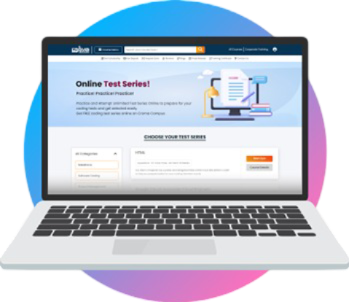
FAQ's
SAS Training in Gurgaon is offered by Croma Campus. We’re a leading SAS Training Institute in Gurgaon. We provide the most learning environment for the major technical course at an affordable price. The best SAS Training in Gurgaon offered by the best technical IT training. We provide basic and advanced level SAS Training in Gurgaon with proper practical knowledge.
Our sturdy associations with prime organizations like HCL, Wipro, Dell, Birlasoft, TechMahindra, TCS, IBM, etc. make the U.S.A. capable to put our students in prime MNCs across the world.
Croma Campus in Gurgaon mentored more than 4000+ competitors with SAS Training in Gurgaon at a truly sensible charge. The course educational program is redone according to the prerequisite of applicants/corporates.
SAS Training Institute in Gurgaon included some important courses like SAS Programming, SAS Macro Language, SAS SQL, SAS Advanced Programming etc.
For details information & FREE demo class call us on +91-9711526942 or write to us info@cromacampus.com
Address: - G-21, Sector-03, Noida (201301)

- - Build an Impressive Resume
- - Get Tips from Trainer to Clear Interviews
- - Attend Mock-Up Interviews with Experts
- - Get Interviews & Get Hired
If yes, Register today and get impeccable Learning Solutions!.

Training Features
Instructor-led Sessions
The most traditional way to learn with increased visibility,monitoring and control over learners with ease to learn at any time from internet-connected devices.
Real-life Case Studies
Case studies based on top industry frameworks help you to relate your learning with real-time based industry solutions.
Assignment
Adding the scope of improvement and fostering the analytical abilities and skills through the perfect piece of academic work.
Lifetime Access
Get Unlimited access of the course throughout the life providing the freedom to learn at your own pace.
24 x 7 Expert Support
With no limits to learn and in-depth vision from all-time available support to resolve all your queries related to the course.
Certification
Each certification associated with the program is affiliated with the top universities providing edge to gain epitome in the course.
Showcase your Course Completion Certificate to Recruiters
-
Training Certificate is Govern By 12 Global Associations.
-
Training Certificate is Powered by “Wipro DICE ID”
-
Training Certificate is Powered by "Verifiable Skill Credentials"




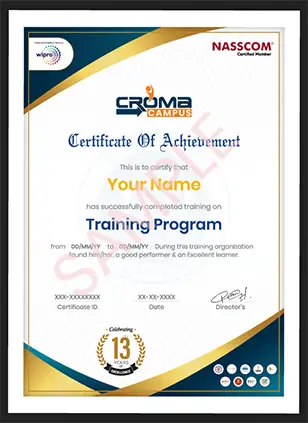
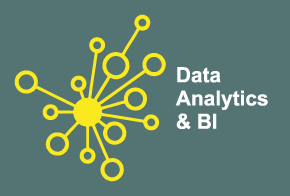
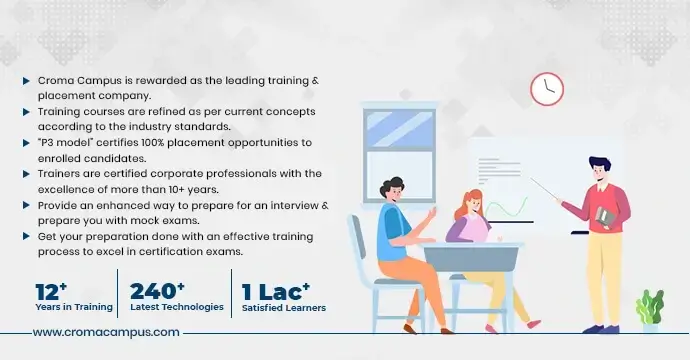

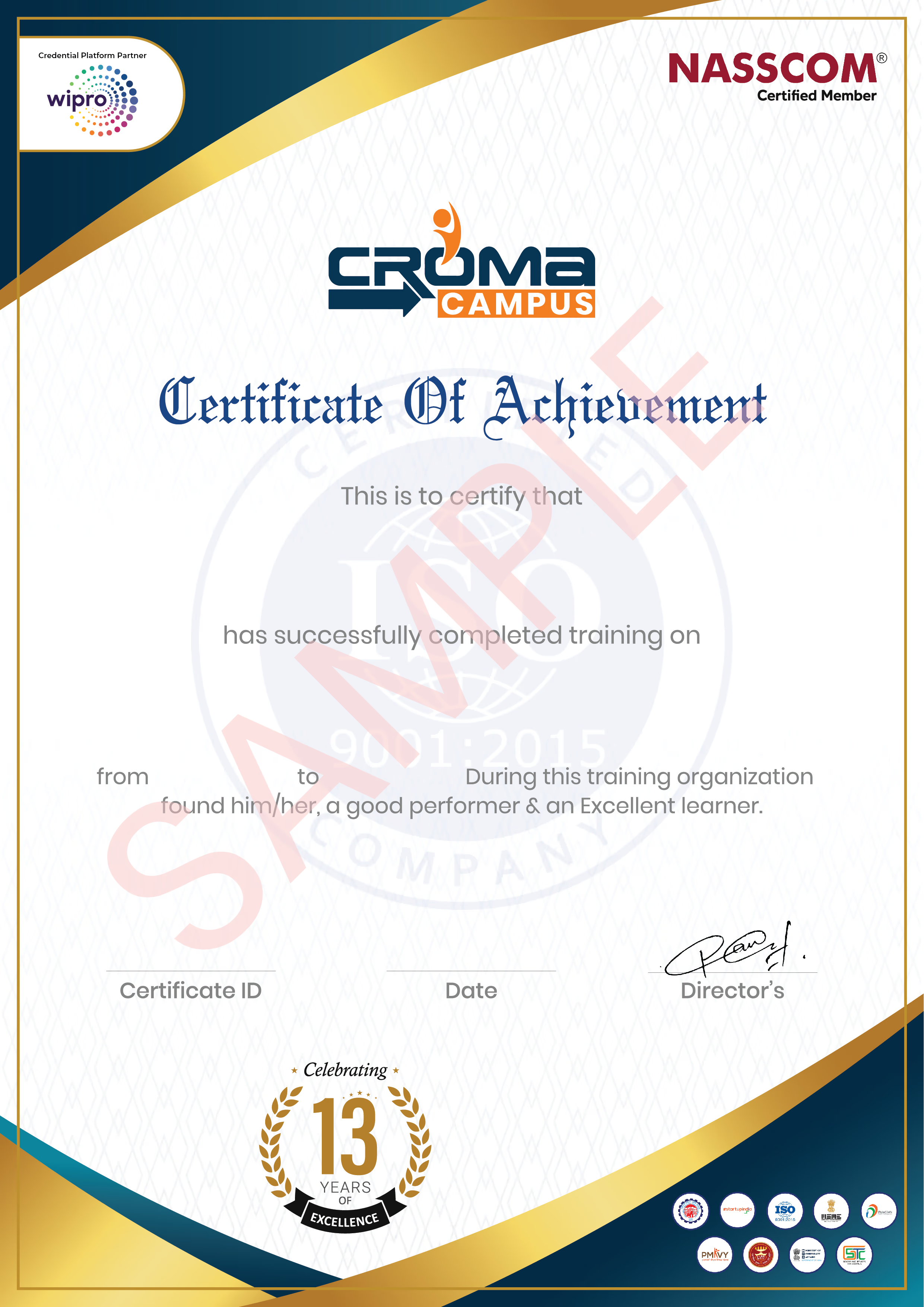
.webp)
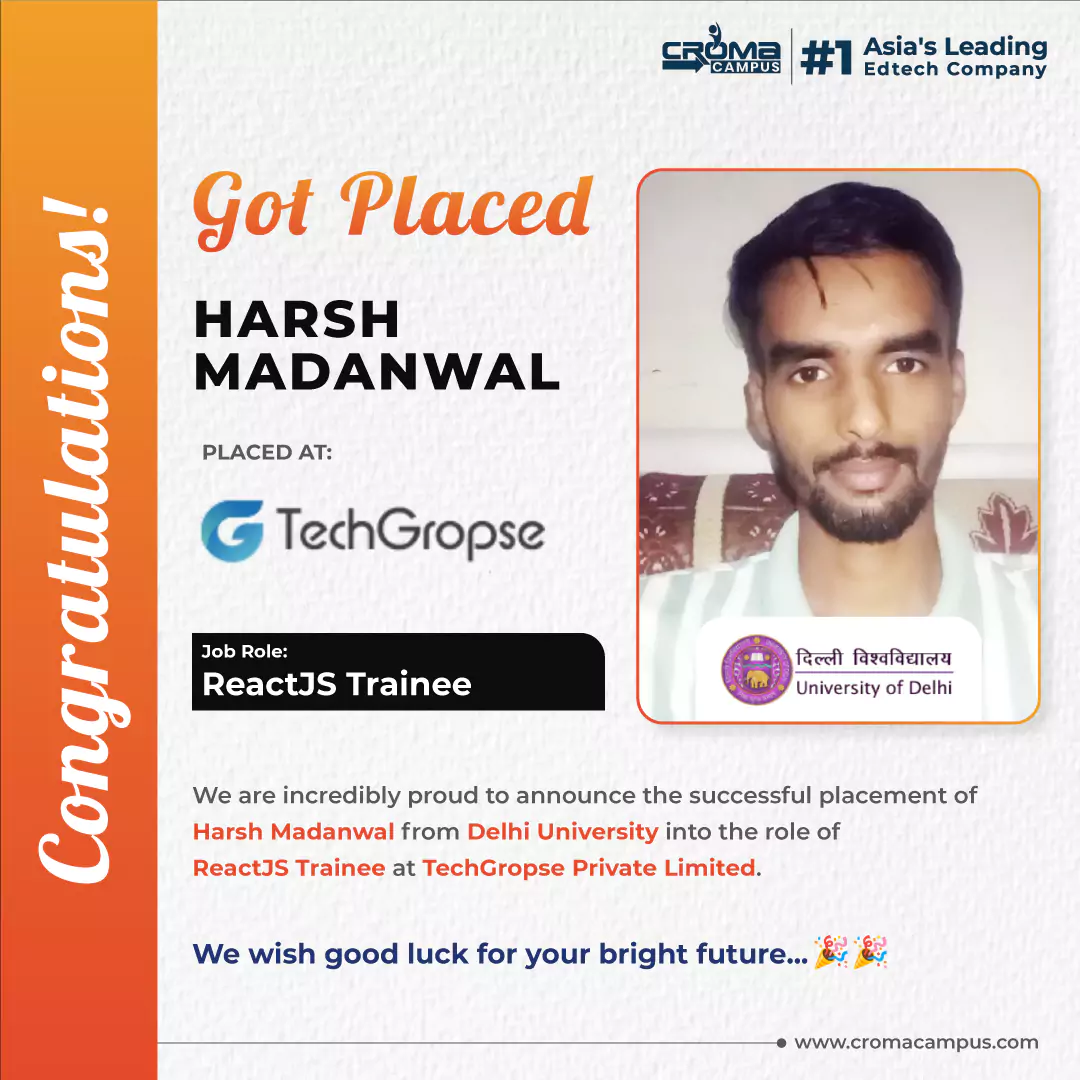








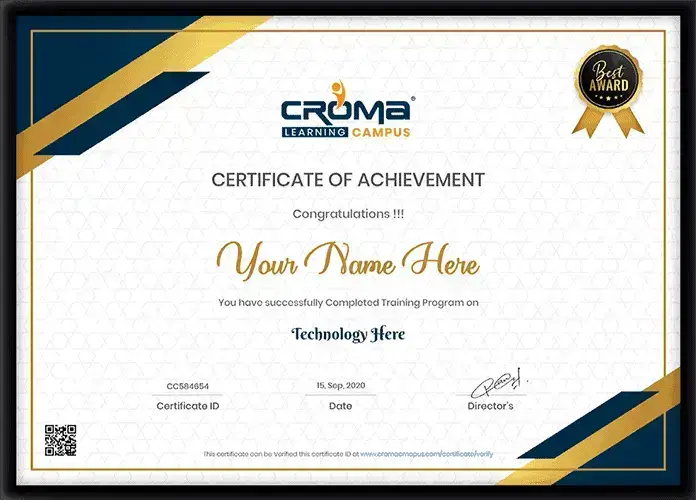








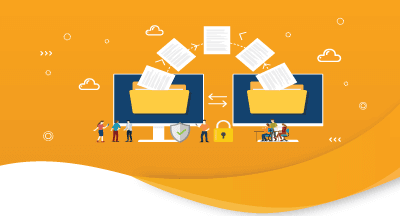



 Master in Cloud Computing Training
Master in Cloud Computing Training